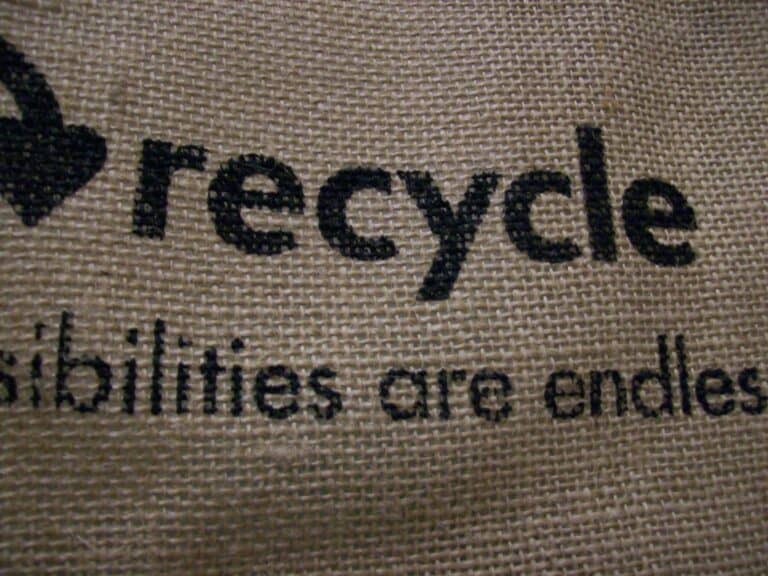What makes a yoga mat eco-friendly?

As someone who is passionate about both yoga and the environment, I have spent a lot of time researching what makes a yoga mat eco-friendly and trying out various brands and materials. In this article, I will share my opinions and insights on what exactly constitutes an eco-friendly yoga mat, why it matters, and some of my favorite brands and materials.
First of all, let’s define what we mean by “eco-friendly.” In general, an eco-friendly product is one that has been designed, produced, and/or disposed of in a way that minimizes harm to the environment. This can include using sustainable materials, reducing waste and emissions during production, and ensuring that the product is biodegradable or recyclable at the end of its life cycle.
In a related article, I explore the broader topic of How Circular Economy is Transforming the Industry.
So, what makes a yoga mat eco-friendly? There are a few key factors to consider.
Material
The most common material used for yoga mats is PVC (polyvinyl chloride), a synthetic plastic that is cheap and durable. However, PVC is also non-biodegradable and releases toxic chemicals when produced and disposed of. PVC can take hundreds of years to break down in a landfill. Therefore, eco-friendly yoga mats are typically made from natural, sustainable materials such as:
- Natural rubber: This material is biodegradable, non-toxic, and provides excellent grip and cushioning. However, some people may be allergic to latex, which is a component of natural rubber.
- Cork: Cork is a renewable resource that is harvested from the bark of cork oak trees. It is naturally antimicrobial, non-slip, and provides a firm surface for yoga practice.
- Jute: Jute is a plant fiber that is biodegradable, renewable, and provides good grip. However, it is not as cushioned as other materials and may wear out faster.
- TPE (thermoplastic elastomer): TPE is a synthetic material that is recyclable and non-toxic. It is also lightweight and provides good grip and cushioning. However, it is not as durable as some other materials.
Read more about eco-friendly materials in this article!
Production
The production process for eco-friendly yoga mats should be as sustainable and low-impact as possible. This includes using renewable energy sources, minimizing waste and emissions, and using non-toxic dyes and finishes. Some brands also prioritize fair labor practices and support local communities.
Disposal
At the end of its life cycle, an eco-friendly yoga mat should be able to biodegrade or be easily recyclable. This means that it won’t end up in a landfill for hundreds of years, polluting the environment and harming wildlife.
Why are eco-friendly yoga mats important?
Now that we know what to look for in an eco-friendly yoga mat, let’s talk about why it matters. After all, isn’t a yoga mat just a small item that doesn’t have much impact on the environment?
Impact on the environment
Actually, the impact of yoga mats can be significant. According to a study by the United Nations Environment Programme, the global yoga industry produces around 300 million mats each year, most of which are made from PVC. These mats contribute to plastic pollution, greenhouse gas emissions, and toxic waste in landfills. In addition, the production of PVC involves the use of hazardous chemicals and releases dioxins, which are known carcinogens.
By choosing an eco-friendly yoga mat, we can reduce our own environmental impact and support brands that prioritize sustainability and ethical practices. We can also set an example for others in the yoga community and encourage them to make more conscious choices.
How to choose an eco-friendly yoga mat
The material of your yoga mat is the most important factor to consider when choosing an eco-friendly option. Look for mats made from natural materials such as natural rubber, jute, cork, and organic cotton. These materials are renewable, biodegradable, and do not release harmful chemicals during production.
The production process of your yoga mat is another important factor to consider. Look for mats that are made using sustainable and ethical production methods. Check if the manufacturer has certifications such as Fair Trade or GOTS (Global Organic Textile Standard) to ensure that they meet high ethical and environmental standards.
A good yoga mat should last you for years. Look for mats that are durable and can withstand regular use. Keep in mind that some natural materials, such as jute, may wear out faster than others.
Eco-friendly yoga mats can be more expensive than traditional PVC mats. However, investing in a high-quality mat can save you money in the long run as you won’t need to replace it as often. Additionally, consider the cost to the environment when making your purchase. A slightly more expensive eco-friendly mat can save you money in the long run as you won’t need to replace it as often.
Read more about choosing your yoga mat in this post!
Recommendations for eco-friendly yoga mats
So, which eco-friendly yoga mats do I recommend? Here are a few of my favorites:
Jade Yoga
Jade Yoga is a popular brand that uses natural rubber to create their mats. They also plant a tree for every mat sold, which helps to offset carbon emissions and support reforestation efforts. In addition, Jade Yoga is committed to ethical manufacturing and supports various environmental and social causes through donations and partnerships. Their mats come in various thicknesses and designs, and I have found them to be durable, non-slip, and comfortable for my practice.
Yoloha Yoga
Yoloha Yoga uses cork as the primary material for their mats, which is sustainable and naturally antimicrobial. They also incorporate recycled rubber into their designs for added cushioning and grip. Yoloha Yoga’s production process is low-impact and they prioritize ethical and fair labor practices. Their mats have a unique texture and design, and I have found them to be sturdy and supportive.
Manduka
Manduka is a well-known brand that offers a range of eco-friendly mats, including those made from natural rubber and TPE. They have a “closed-loop” production process, which means that they recycle all of their production waste and use renewable energy sources. Manduka also partners with various organizations to support sustainability and social justice initiatives. I have used Manduka mats for years and have found them to be long-lasting and comfortable.
Ajna Wellbeing
Ajna Wellbeing offers yoga mats made from natural cork and TPE, as well as other eco-friendly yoga accessories. They prioritize sustainable production and use non-toxic dyes and finishes. Ajna Wellbeing also partners with Trees for the Future to plant a tree for every product sold. I have tried their cork mat and found it to be non-slip and supportive, with a unique texture and design.
B Mat
B Mat uses natural rubber to create their mats, which are non-toxic and biodegradable. They also prioritize sustainable and ethical manufacturing practices, and their mats come in various thicknesses and colors. I have used B Mat for hot yoga classes and found it to be non-slip and cushioned, with good grip even when wet.
Of course, there are many other eco-friendly yoga mat brands out there, and the best one for you will depend on your personal preferences and needs. However, I recommend doing your research and choosing a brand that aligns with your values and priorities.
An eco-friendly yoga mat is one that is made from sustainable materials, produced with low-impact and ethical practices, and able to biodegrade or be recycled at the end of its life cycle. By choosing an eco-friendly yoga mat, we can reduce our environmental impact, support ethical and sustainable brands, and set an example for others in the yoga community. When searching for an eco-friendly yoga mat, be sure to consider the material, production process, and durability. With so many options on the market, it’s easy to find a mat that fits your needs and budget.
I encourage all yogis to consider the impact of their practice and make conscious choices that prioritize both personal and planetary health. As someone who practices yoga regularly, I believe it’s our responsibility to make the switch to an eco-friendly yoga mat and do our part to protect the planet.
Disclosure: Some of the links in this article may be affiliate links, meaning, at no additional cost to you, I may earn a commission if you click through and make a purchase.






